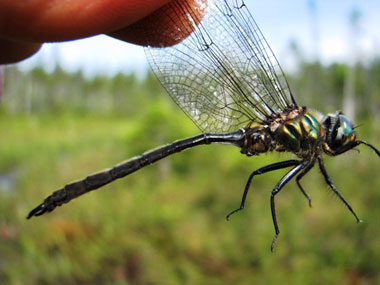Be Informed
Sign up for Sépaq emails to be the first to find out about our promotions, news and special offers.
Having extensive knowledge of the parks to better preserve them is the foundation that justifies the efforts invested in inventories, monitoring programs and scientific research. At Parc national de Frontenac, in collaboration with local residents, we established the Regroupement pour la protection du Grand lac Saint-François. The mission of this group is to pool the energies of all agencies connected with the lake in order to improve its health. Actions that have been taken by the partners include monitoring water quality, a project to revegetate the shoreline, the identification of problems in the watershed, and the realization of a comprehensive action plan
The park also devotes considerable research and field action efforts to the fight against alien invasive species, mainly the common reed. The data resulting from these years of work are now integrated in the park's territorial management to facilitate control of certain more problematic reed colonies.
Along with these projects, various monitoring procedures and inventories are currently being carried out on the park’s territory. The main research work includes, most notably, mycological inventories, monitoring the nesting of the Great Blue Heron and the Bald Eagle as well as inventories of odonates at the Saint-Daniel bog.
Find out more about scientific research in the Québec's National Parks network
The Saint-Daniel sector peat bog and its forest periphery are home to an unusual community of dragonflies. Some species have been observed for the first time in this Appalachian region. Other species had never been recorded south of the St. Lawrence River. Some are even recent incursions into the province.

Photo credit: Alain Mochon
Among the discoveries, some species have been spotted for the first time south of the St. Lawrence River and, by the same token, in this region of the Appalachians. This is the case for the Quebec Robert Emerald (Somatochlora brevicincta), with 12 known occurrences confined to the boreal and subarctic bioclimatic zones. The same goes for a tiny anisopteran with the dreamlike name of elfin skimmer (Nannothemis bella), considered rare in temperate mixed and broadleaved zones with only 9 known occurrences in Québec.
Sign up for Sépaq emails to be the first to find out about our promotions, news and special offers.